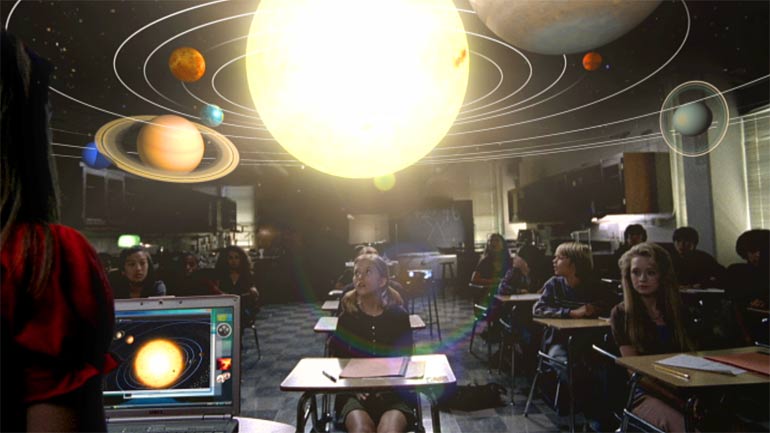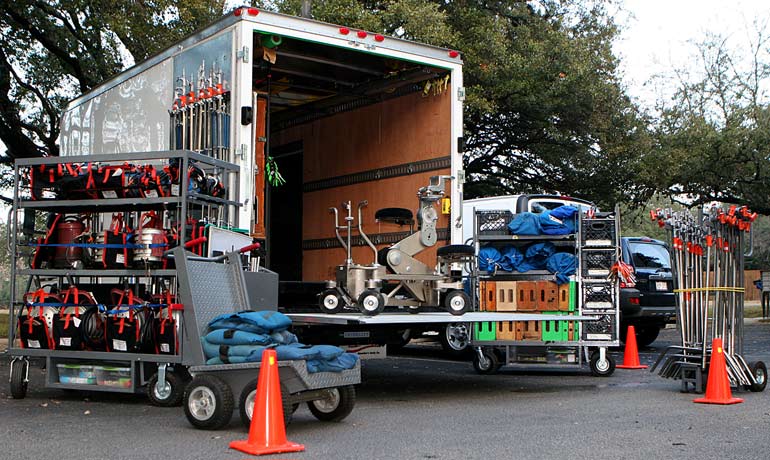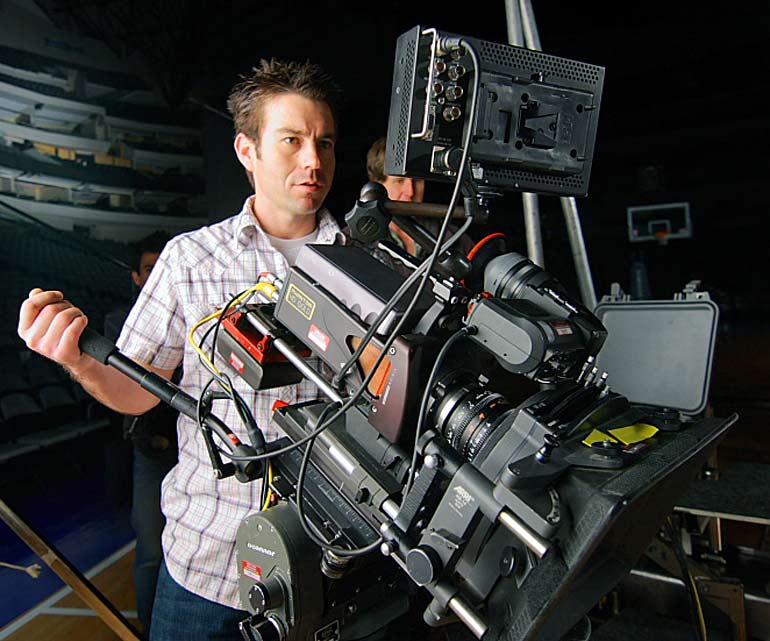The most common question when producing a broadcast commercial or video is “Why does it cost so much?” Even as an executive producer and production company owner, it’s tough to answer because it goes hand-in-hand with an understanding of what a client’s desires are in the way of purpose, worth and importance for their product.
 Have you ever see an Apple or Dell commercial and then compared it to your local automotive or lawyer group television commercials? That is probably the easiest way to help illustrate “production value”—even before knowing the cost. The Apple or Dell commercial can cost anywhere from $250,000 to $1,000,000 to produce while the lawyer commercial can cost anywhere from $2,000 to $25,000 to produce.
Have you ever see an Apple or Dell commercial and then compared it to your local automotive or lawyer group television commercials? That is probably the easiest way to help illustrate “production value”—even before knowing the cost. The Apple or Dell commercial can cost anywhere from $250,000 to $1,000,000 to produce while the lawyer commercial can cost anywhere from $2,000 to $25,000 to produce.
Apple and Dell are huge companies with vast target markets—and large marketing budgets. The quality of their commercials are representative of their brands to their consumers. They cannot afford to do a low budget TV spot which could translate into:
- Diminishing their brand appeal
- Basically handing market share to their competition
At the same time, different companies have different:
- Goals
- Audiences
- Budgets.
All three will drive the end “production value.” Obviously the local law firm doesn’t have the budget of Apple or Samsung, so you wouldn’t expect them to have the same production strategies.
Requests for estimates and RFPs come in and out of our doors all day long for any and all services from live action filming, to post production services to visual effects for a feature film, and interactive development. These inquiries sometimes come from advertising agencies that know what they have to spend or should be spending and other times from agencies or clients that want to spend the least amount of money that can still get the job done.
Let’s relate “production value” to grocery shopping for a dinner you are having at your home. Before you go shopping you have an understanding of:
- How many people you will feed,
- What they do and don’t like to eat,
- How much you would like to spend,
- How much time you can afford prepping the meal, and
- The type of event you will be hosting (family meal, dinner party, etc.)
When you walk up to the meat department, you have an idea of the palates your guests may have. Are the guests children? Family? Or are you wanting to impress a potential client or company executives? Either way, your grocery list varies based on how you would like your guests to perceive your efforts and the dinner.
You may find ground chuck beef that can make some decent hamburgers or perhaps even steaks to kick up the value for your party. After some thought, you decide to go with some $15.99/lb rib-eye steaks instead of the $5.99 frozen t-bone steaks because you find value in having peace of mind knowing that for your guests to leave with a satisfied bellies, and you definitely don’t want to use any low grade meats.
On the other hand, sometimes the ground chuck burgers do just fine in keeping your guests satisfied for an outdoor poolside party! Throw in some hotdogs with potato salad and you may just have yourself a “real B-B-Q.”
Whether you are spending $1000 or $100,000, there are ways to get the right production that fits the purpose of your campaign. “Production Value” has an infinite amount of ingredients that can cause a fluctuation in cost including:
1. The Big Idea.
No matter how much “production value” you wish to instill in your advertising, the most important ingredient for any production is the creative content—a great idea that connects to your viewer. Without this very important foundation, your product will not be successful and you will have a difficult time justifying both the monetary and time expenditures.
2. People. People. And more people.
Just like the end credits to a feature film, your advertising product is developed from a brainstorm on a piece of paper into real advertising product through a collaborative team of producers to directors, cameramen and grips, sound engineers, coordinators, city officials, to catering and post-production producers and audio studios. Your project may not have the need for or require so many people but behind the scenes there can be a lot more people involved that meets the eye. Creative directors employ account executives or managers to help manage message and client expectation. A director can have an assistant director to help make sure that the elements needed on screen are prepped and running on time. In order to focus on the camera movement, lighting, and screen direction, a director of photography can use a camera assistant that ensures the camera is correctly being prepared, in focus, and footage is being transferred in the background. Video assist operators with monitors and playback devices can enable a client and agency monitor and be a part of the filming process. You may need a stylist to gather wardrobe and props. The list goes on.
3. Talent.
Your project may require an amazingly talented on-screen host that drives the advertising campaign (think Flo from Progressive Insurance.) Talent of this caliber must casted, paired down and then potentially re-casted in a “callback session.” Does local talent fulfill your needs or should your casting director look regionally or nationally pull of the commercial campaign?
4. Usage Rights & Fees.
Do you want to purchase a talent media-buy that licenses the talent locally for 13 weeks or nationally for 1 year on TV, web, and print collateral.
5. Equipment.
In addition to filming crew, there is equipment and resources involved in acquiring images from set. The camera comes to mind and there is no perfect camera for every project and “production value” must be scrutinized to find out which is right for your project. Some projects ask for “gorilla style shooting” or “documentary style shooting” where equipment and crews need to be more nimble and lighter to move. Others ask for higher resolution, high-speed, or specialized cameras and lenses that instill a particular aesthetic on screen. These are often used in conjunction with more art directed or choreographed scenes that add “production value” to a concept.
6. Post-Production.
Post-production is the final phase before your project is set out into in front of the world. During this time, editors and producers are working to tell the story in the best way and align your end product with original story, concepts, and budgets. How polished is will your concept and final product need to be? Post-production is the final phase before you project is introduced to the world and encompasses several areas that can affect costs such as editorial hours, color correction, visual effects, animation, motion graphics, audio production, music licensing vs. original score, voice over talent recordings, and more.
7. Insurance.
Employing a professional production company can protect yourself and your campaign and even your company. To many times someone knows a friend who has a camera and a laptop to edit on in their room, but does this person have real experience to get your project done, just the way you want it? Do they have production insurance that releases you and your company from accidents and liability is someone is hurt if their light-stand falls on a child or even him or herself? Having production insurance is an expensive part of being in business, but insignificant compared to a lawsuit.
Understanding concepts, target audiences and available marketing dollars can help design the right advertising campaign, and the right “production value” can often be defined in conversation with an experienced production company.
Just remember, when you purchase the better steak you are, in essence, buying an insurance policy on your investment and the same goes for production.
 Zach Nasits, Guest Contributor
Zach Nasits, Guest Contributor
Executive Producer / Director of Photography / Principal Owner
Geomedia, INC